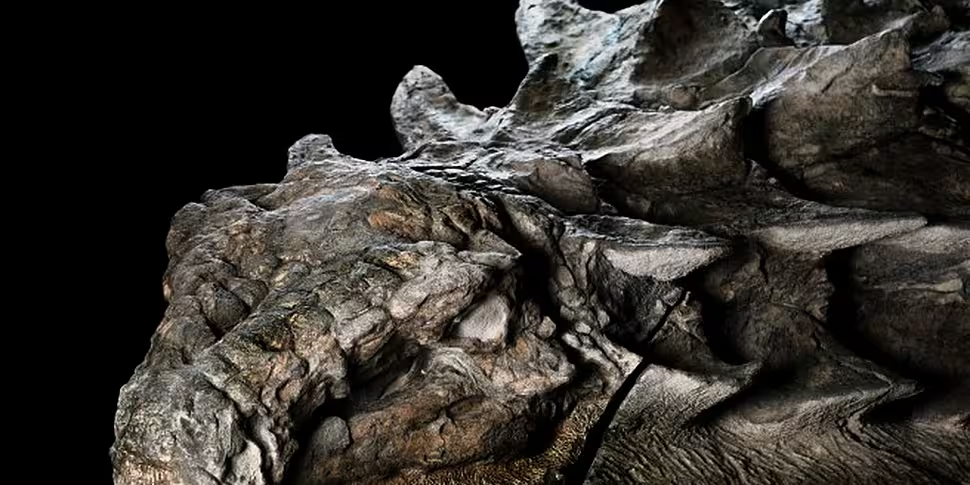A rare dinosaur fossil uncovered by a labourer with a shovel has been unveiled in Canada, six years after it was discovered entirely by accident.
The 100-million-year-old nodosaur fossil is now on display in Canada’s Royal Tyrell Museum of Palaeontology, and is so well preserved that many might mistake it for a statue.
On March 21st, 2011, Canadian miner Shawn Funk was digging in Alberta when he struck something much harder than the surrounding rock. Taking a closer inspection, he noticed “row after row of sandy brown discs, each ringed in gunmetal grey stone,” according to National Geographic.
The 1,100kg dinosaur remains were transported to a nearby museum, where the prized fossil was painstakingly separated from the rock from the calcified bone.
“I couldn’t believe my eyes – it was a dinosaur,” Donald Henderson, the curator of dinosaurs at the museum, told Alberta Oil.
Experts identified the fossil as the snout-to-hips section of a nodosaur, which roamed what is now Canada during the Cretaceous Period. A four-legged herbivore, the dinosaur has been described as resembling a lizard and a lion, covered in spiky scales.

A computer-generated image showing how the nodosaur likely appeared [Robert Clark/ National Geographic]
The researchers who identified the fossil estimate that it was almost 5.5m in length and weighed more than 1,360kg. The incredible level of preservation is so good that National Geographic described it as “rare as winning the lottery.”
The palaeontologists’ good fortune at the state of the fossil is likely tied to the final moments of the dinosaur’s life; researchers have theorised that the creature was at a riverbed when it was swept downstream by a flood.
The woodland dinosaur would have floated out to sea, where the mine in which it was found is now located.
It was on the bottom of the sea where mineral “infiltrated the skin and armour and cradled its back, ensuring that the dead nodosaur would keep its true-to-life form as aeons’ worth of rocked piled atop it.”









